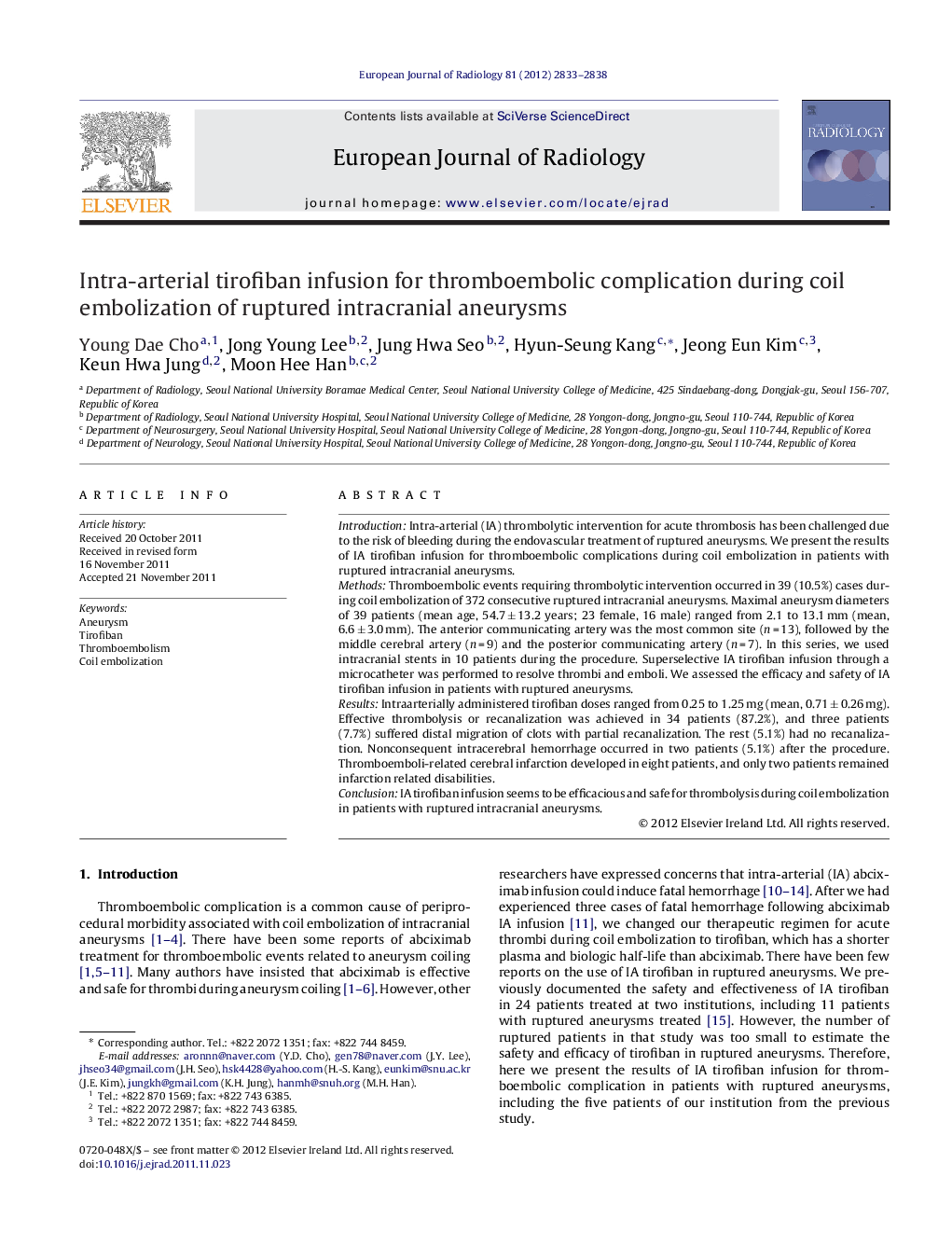| Article ID | Journal | Published Year | Pages | File Type |
|---|---|---|---|---|
| 6245039 | European Journal of Radiology | 2012 | 6 Pages |
IntroductionIntra-arterial (IA) thrombolytic intervention for acute thrombosis has been challenged due to the risk of bleeding during the endovascular treatment of ruptured aneurysms. We present the results of IA tirofiban infusion for thromboembolic complications during coil embolization in patients with ruptured intracranial aneurysms.MethodsThromboembolic events requiring thrombolytic intervention occurred in 39 (10.5%) cases during coil embolization of 372 consecutive ruptured intracranial aneurysms. Maximal aneurysm diameters of 39 patients (mean age, 54.7 ± 13.2 years; 23 female, 16 male) ranged from 2.1 to 13.1 mm (mean, 6.6 ± 3.0 mm). The anterior communicating artery was the most common site (n = 13), followed by the middle cerebral artery (n = 9) and the posterior communicating artery (n = 7). In this series, we used intracranial stents in 10 patients during the procedure. Superselective IA tirofiban infusion through a microcatheter was performed to resolve thrombi and emboli. We assessed the efficacy and safety of IA tirofiban infusion in patients with ruptured aneurysms.ResultsIntraarterially administered tirofiban doses ranged from 0.25 to 1.25 mg (mean, 0.71 ± 0.26 mg). Effective thrombolysis or recanalization was achieved in 34 patients (87.2%), and three patients (7.7%) suffered distal migration of clots with partial recanalization. The rest (5.1%) had no recanalization. Nonconsequent intracerebral hemorrhage occurred in two patients (5.1%) after the procedure. Thromboemboli-related cerebral infarction developed in eight patients, and only two patients remained infarction related disabilities.ConclusionIA tirofiban infusion seems to be efficacious and safe for thrombolysis during coil embolization in patients with ruptured intracranial aneurysms.
